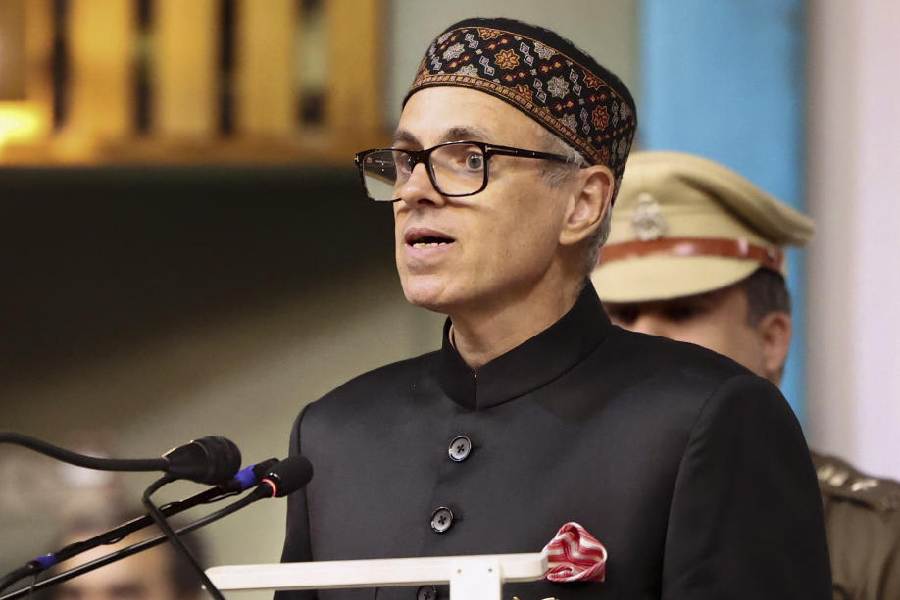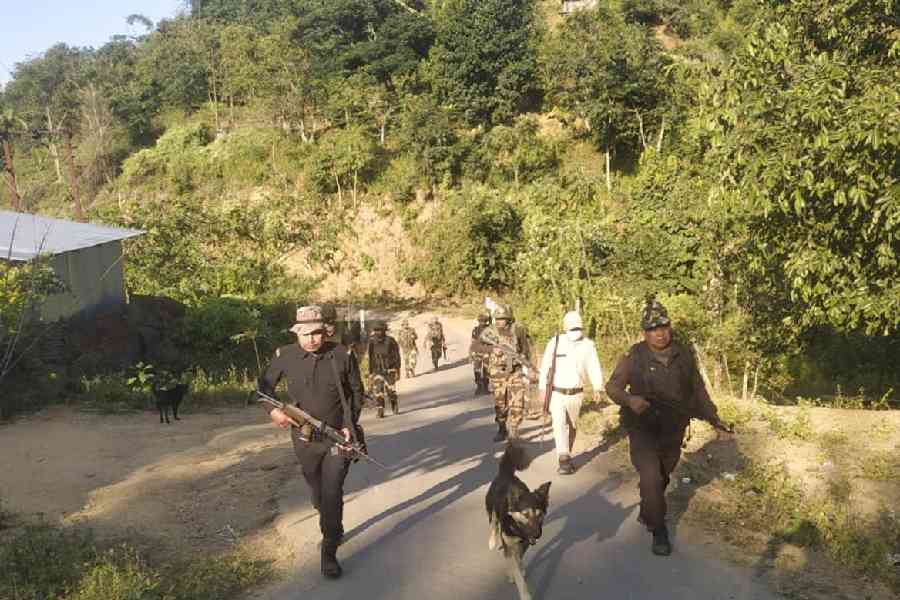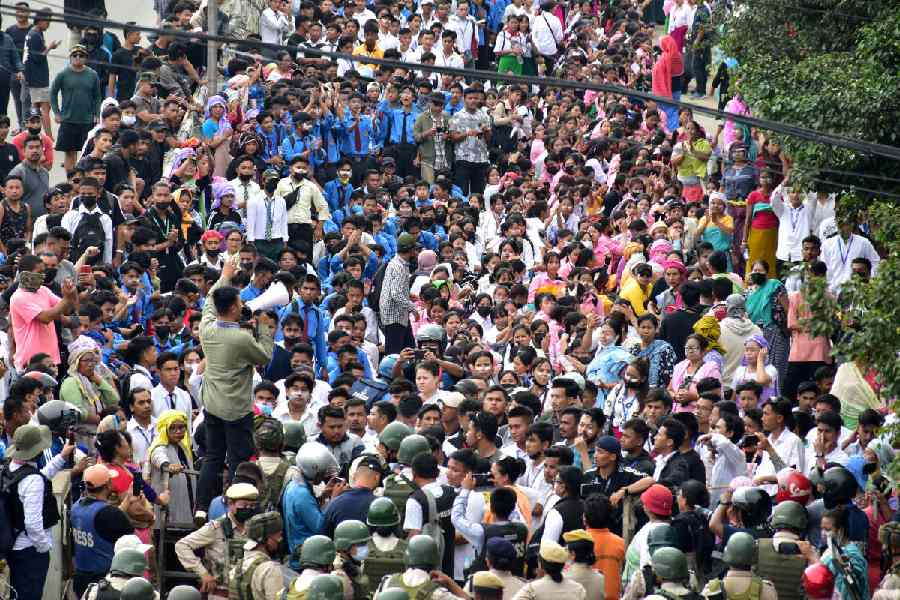Daljit Diyali was 24 years old when a bullet missed him by a whisker but another hit his mother Gangamaya, then 56, killing her on the spot at Kalimpong on July 27, 1986.
Daljit, his sister Shila, then 29, and Gangamaya were at the forefront of the procession to burn the 1950 Indo-Nepal friendship treaty at the Mela ground in Kalimpong following a call given by Subash Ghisingh, who was spearheading the Gorkhaland agitation in the 80s.
“Even my father late Birka Bahadur Diyali, who died in 1997, would have joined the procession had he not gone to a neighbour’s place to tend the farms that day,” recalls Daljit, a resident of Sindabong in Kalimpong. “The emotions were really high then.”
On that fateful day, 13 people lost their lives. Chunnu Lama, who was injured, died after a couple of weeks. During the Gorkhaland agitation, hundreds perished across the Darjeeling hills.
Gorkhaland is still the nucleus of Darjeeling politics and votes are still being sought on this emotion.
But Daljit, whose family made the supreme sacrifice for the demand, isn’t clear in his thoughts ahead of Friday’s vote.
“Khoi ke bhannu (What should I say)? I can’t make out anything this time around. Our 15 years have been wasted and our dream is still a dream. But again, people are saying the Modi government will come (to power) at the Centre,” says Daljit.
Daljit is among the many who find themselves standing at the crossroads in the hills.
“On one hand, the BJP that Darjeeling voted for 15 years since 2009, shows no signs of delivering on the emotive issue of Gorkhaland. On the other side, Trinamool Congress (TMC) has expressly voiced its opposition to the demand of Gorkhaland state,” says Khagendra Chhetri, a resident of Kalimpong.
The Darjeeling crossroads has warmed up the contest between BJP’s incumbent MP Raju Bista and TMC’s Gopal Lama who is backed by Anit Thapa’s Bharatiya Gorkha Prajatantrik Morcha (BGPM), a party at the helm of affairs in the hills.
“Due to the non-delivery by BJP and again because of the general trust deficit of the hill people towards TMC or rather any Calcutta-centric parties, the votes are getting split in Darjeeling hills this time around,” argues a political observer from Darjeeling.
In the 2019 Darjeeling Lok Sabha election, Bista won by a landslide victory margin of more than 4.2 lakh votes. But this time even BJP supporters acknowledge it will not be such a one-sided contest.

Perhaps sniffing some opportunity, Thapa has gone all out and adopted a two-pronged strategy.
He has ensured that there is no sign of TMC in the election campaign in the Darjeeling hills. Only the flags and banners of Thapa’s party, BGPM, are being used while campaigning for the TMC candidate.
“As part of his second strategy, Thapa, in closed-door meetings in rural areas, is talking about local level issues like roads, drinking water and how this win would ensure a steady flow of funds from the state government,” says an insider who is closely tracking Thapa’s campaign.
“Gorkhaland is an emotion that exists with all Gorkhas, whether they are with the TMC, BJP or any other party. I am only stressing that Gorkhaland is an issue of the community and should not be made an election issue,” says Thapa.
Bista seems aware that the BJP’s failure to deliver to the Gorkhas is strengthening Thapa’s hand. “The other side shoots at our people when we raise our demand, while this side is considering our issues with all seriousness,” Bista said at a recent election rally.
In this tug-of-war of emotions, people like Daljit, unlike politicians, have not benefited much in the past 38 years.
After Ghisingh accepted the Darjeeling Gorkha Hill Council (DGHC) in 1988, Daljit was called to Bhanu Bhavan on June 19, 1989, and handed over “Rs 8000”. “Subash Ghisingh sahib then said the amount might seem less but parsad (holy offering) is also less. He also said the DGHC would soon get its own budget hinting that we would get something more,” says Daljit, who added that his family’s sacrifice was not for a “council”.
The martyrs’ families received nothing more. “All I got was a grade-D contract job in 1993 in the hill council through the efforts of C.K. Pradhan (then GNLF leader from Kalimpong),” says Daljit, whose job ironically was to take care of the martyr’s column in Kalimpong.
In recognition of Gangamaya’s contribution to the statehood agitation, Gangamaya Park was built in Darjeeling in 1996 by Ghisingh, then chairman of the DGHC. A waterfall was also named after Chunnu Lama. These are popular tourist sites in Darjeeling.
“Today, my two sons are drivers and my daughter is married. I prefer not to speak about my family much,” says Daljit.
A sense of despair in the hills is an indication that a crucial battle for the Darjeeling seat will also be played out in the plains this time around.
The Darjeeling constituency consists of three Assembly segments in the hills — Darjeeling, Kalimpong and Kurseong — and four in the plains — Siliguri, Naxalbari-Matigara, Phansidewa, and Chopra in North Dinajpur district.
The total votes in the hills stand at around 7 lakhs while those in the plains are around 10 lakhs. “The hills have always decided the outcome of the Darjeeling seat because they have always voted as one block. This time the performance of the parties in the plains will also be crucial,” says the observer.
Darjeeling votes on April 26










